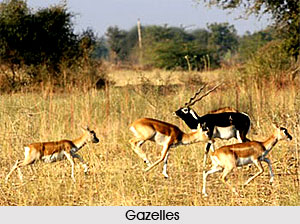 Forests under Mughal Empire were observed, technically, by the Mughal Emperors. Animals were known individually at the court and their deeds were celebrated. The forests were easy to map. There was a range of imperial hunting grounds in different provinces. There were vast areas of woody, scrub jungle which did not have a dense population. The cattle included antelope, gazelles and lions.
Forests under Mughal Empire were observed, technically, by the Mughal Emperors. Animals were known individually at the court and their deeds were celebrated. The forests were easy to map. There was a range of imperial hunting grounds in different provinces. There were vast areas of woody, scrub jungle which did not have a dense population. The cattle included antelope, gazelles and lions.
Peasants used to hack down jungle to create farmland. The gifts that were offered as tribute did give an insight into wildlife prosperity. Elephants were received as gifts instead of cash from north Indian villages. There were vast pastures for cattle and firewood. Forests were being cleared. However in large regions of central India and Chota Nagpur plateau forest covered a greater expanse farms. Valleys, low-lying areas and the plains were cleared for agriculture.
The forests were the hunting sites, revenue-yielding arable land or an obstacle to military operations. The jungle was a place to converse with the supernatural powers. Military forces often used sawyers, woodcutters and road builders in order to deny protection to rebels. Denudation was common during war. Falconry, cheetah coursing, horsemanship and archery were the main pastimes of landed gentry across north and central India for long time. There existed much larger stretches of contiguous habitat for the larger land mammals as compared to European countries. Fire, axe and plough were reshaping vegetation patterns. The ebb and wave of the forests was itself a prominent feature of that time. Habitats of large mammals like the elephant and the rhino was broken up.
This article is a stub. You can enrich by adding more information to it. Send your Write Up to content@indianetzone.com



















